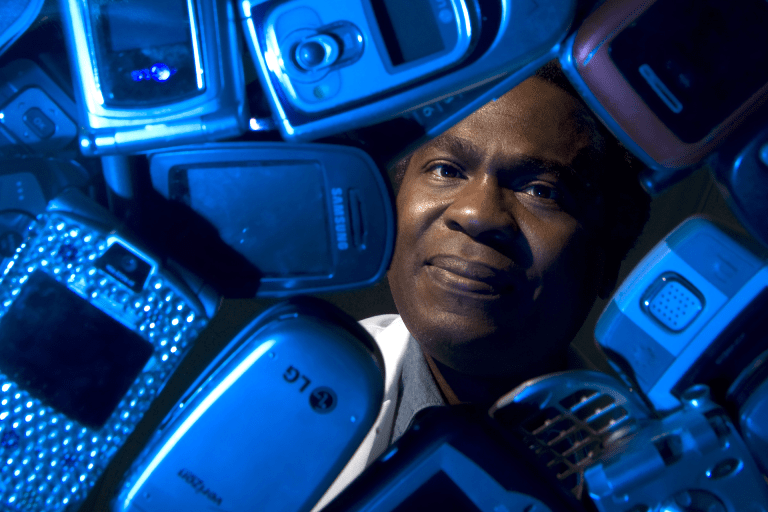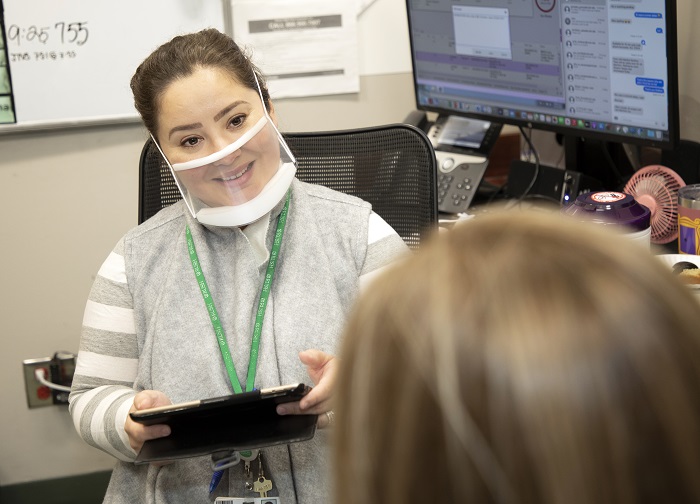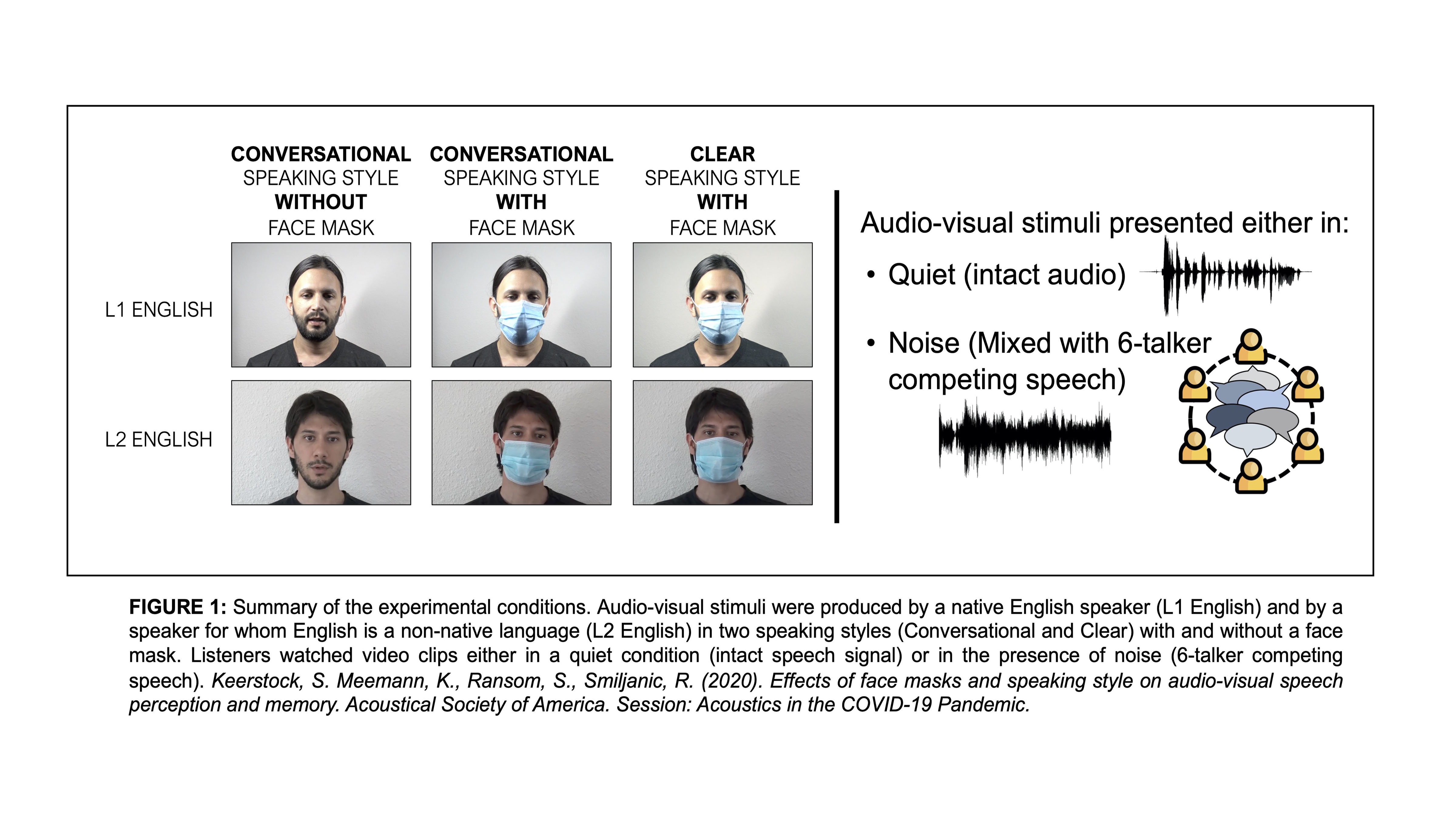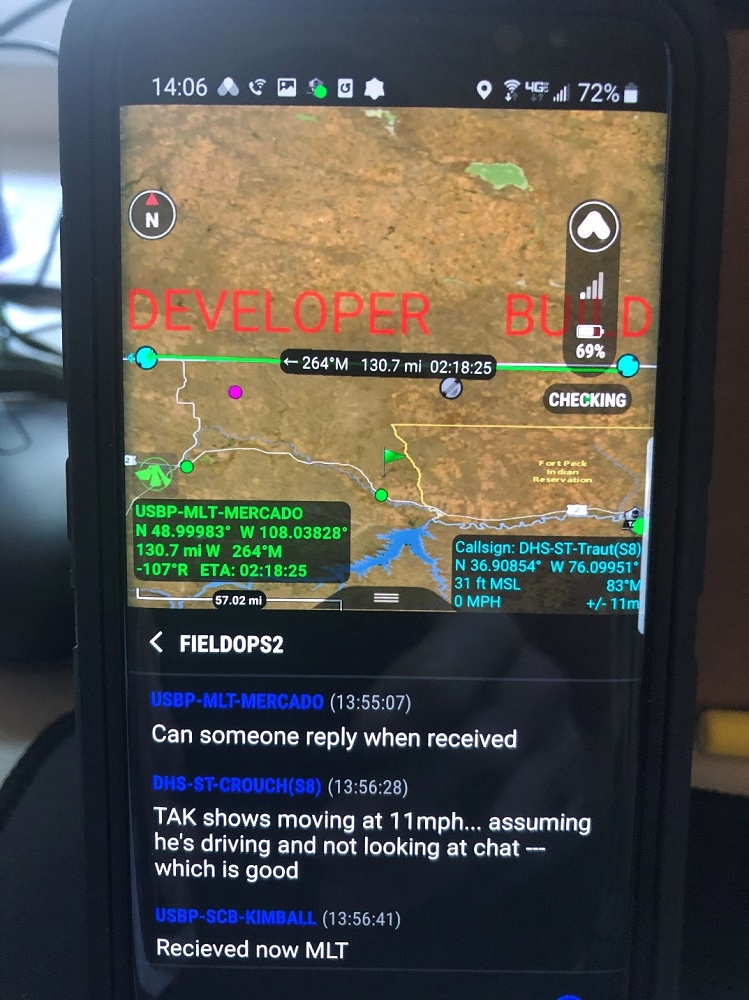July 15 marks Social Media Day, celebrating the profound impact social media has had on global communication and human interaction.
Tag: Communication
FAU CA-AI Research Highlighted in ‘Nature Reviews’
Equipped with a breakthrough algorithmic solution, researchers have “cracked the code” on interference when machines need to talk with each other – and people. Their method, which is a first, dynamically fine-tunes multiple-input multiple-output (MIMO) links, a cornerstone of modern-day wireless systems such as Wi-Fi and cellular networks.
MSU research: What makes a good headline?
According to research from Michigan State University, news readers engage more with simple writing, suggesting journalists should write simply — clearly and without ambiguity — to attract attention online.

Rensselaer Researcher Finds That Users Seek Out Echo Chambers on Social Media
We all know that communication encompasses so much more than words. Facial expressions, intonations, hand gestures, and more contribute to our expressiveness. However, in social media, these intricacies are lost.
Synchronisation between the central circadian clock and the circadian clocks of tissues preserves their functioning and prevents ageing
• Two complementary research articles, published simultaneously in the journals Science and Cell Stem Cell by a team of scientists from the UPF and IRB Barcelona, reveal that central and peripheral circadian clocks coordinate to regulate the daily activity of skin and muscles.
• The coordination between the two clocks (central and peripheral) guarantees 50% of the circadian functions of tissues, including vital processes such as the cell cycle, DNA repair, mitochondrial activity, and metabolism.
• Synchronisation between the central brain clock and peripheral ones prevents premature muscle ageing and improves muscle function, suggesting new strategies to tackle age-related decline through circadian rhythm modulation.
Study Unveils Balance of AI and Preserving Humanity in Health Care
The survey of more than 1,100 nursing professionals and students shows that more than half express reservations toward the integration of artificial intelligence and 38% question its potential benefits for the nursing field. In addition, despite the potential of telehealth services, 74% of nurses have never utilized them, citing doubts about their efficacy in delivering comprehensive patient care. The new report recommends four strategies for health care organizations to empower nurses in adopting AI.
Talking Politics With Strangers Isn’t as Awful as You’d Expect, Research Suggests
Individuals underestimate the social connection they can make with a stranger who disagrees with them on contentious issues, a new research paper suggests.
New GW Research Identifies What to Say to Someone After Experiencing a Broken Marriage Engagement
New study describes the helpful, and not so helpful ways, to offer social support to those who recently ended a marriage engagement.
GW Research Explores How People Make a Snap Judgment About Unfamiliar Dogs
A new study by researchers at the George Washington University Primate Genomics Lab finds that even dogs’ faces provoke instant judgement from people who don’t know them.
New research finds that language shapes communication
The new study suggests there may be benefits of more carefully considering language as a core influence of human performance and communication.
Want to prevent misinformation? Present data with an interactive visual.
Getting readers of a news story interested in numbers can be a challenge. But the benefits of engaging readers in data can lead to a better understanding, preventing misinformation and misrepresentation in the news.
On second thought…..
When employees share a great idea but wind up getting assigned even more more work to make it happen, they keep future great ideas to themselves. Managers can keep communication open by providing support and assistance to help employees bring their great ideas to life.
Hormone alters electric fish’s signal-canceling trick
New research shows that the hormone testosterone — which naturally triggers male electric fish to elongate the electric pulses they send out during the breeding season — also alters a system in the fish’s brain that enables the fish to ignore its own electric signals.
[VIDEO] Dogs With Less Complex Facial Markings Found to Be More Expressive in their Communication with Humans
New study explores the relationship between a canine’s facial appearance and how expressive they appear to be when communicating with their human companions.
Paw-some pets provide a voice for people with aphasia
Feathers, fins or fur, all pets can make us feel happier. Now, new research from the University of South Australia shows that pet ownership and pet care can also support communication and wellbeing, especially for people with acquired language difficulties such as aphasia.
GW Expert Available: What should businesses do to protect employees during the winter surge of COVID-19 & the flu?
The winter surge of COVID-19, the flu and other viruses is here and it’s top of mind as people prepare to see loved ones during the holiday season. As more workers are now spending more time in the office, what…
Comm Arts Chula Offers 2 New Courses on Creating Fun Games to Dazzle Digital Natives
To keep abreast with the world of modern communication, the Faculty of Communication Arts, Chulalongkorn University (Comm Arts Chula) is offering 2 brand new courses on creative media in the form of games through a cross-disciplinary approach alongside Chula Engineering and College of Public Health Sciences to create a media that’s accessible and appealing to the digital-age audience.
Leadership Online: Charisma Matters Most in Video Communication
Managers need to make a consistent impression in order to motivate and inspire people, and that applies even more to video communication than to other digital channels. That is the result of a study by researchers at Karlsruhe Institute of Technology (KIT). They investigated the influence that charismatic leadership tactics used in text, audio and video communication channels have on employee performance. They focused on mobile work and the gig economy, in which jobs are flexibly assigned to freelancers via online platforms. The results of the study have been published in The Leadership Quarterly. (DOI: 10.1016/j.leaqua.2022.101631)

UCI study finds 53 percent jump in e-waste greenhouse gas emissions between 2014, 2020
Greenhouse gas emissions into the atmosphere from electronic devices and their associated electronic waste increased by 53 percent between 2014 and 2020, including 580 metric tons of carbon dioxide in 2020 alone, according to University of California, Irvine researchers.
Continual, clear, factual texting is key to first responder team success, UAH professor finds
First responder teams better grasp an emergency situation when they use continual, clear texting communication of factual information in a way that all members can understand, and that is key to a successful team response, according to new research at The University of Alabama in Huntsville (UAH).

LifeBridge Health Launches Mobile App for Patients
LifeBridge Health has launched a new comprehensive mobile app for patients and consumers. Now available for download for iPhone and Android phone users, LifeBridge Health Mobile offers convenient and immediate access to the health system’s services such the physician directory, patient portal and online scheduling. LifeBridge Health Mobile is just one piece of the health system’s overall strategy to improve the digital patient experience.
Study Uncovers How Blind and Visually Impaired Individuals Navigate Social Challenges
A recent study highlights the range of uncomfortable situations people living with blindness or visual impairment encounter due to interpersonal communication challenges, and outlines strategies people with visual impairment use to navigate these situations.
JMIR Research Protocols | Google Apple Exposure Notification System for COVID-19
JMIR Publications recently published “Dissemination and Implementation of a Google Apple Exposure Notification System for COVID-19 Risk Mitigation at a National Public University: Protocol for a Pilot Evaluation Study in a Real-World Setting” in JMIR Research Protocols which reported that this paper describes the protocol for South Carolina Safer Together, developed by Clemson University to design, deploy, and evaluate multilevel communication and dissemination and implementation (D&I) strategies in line with recommendations from governmental and educational agencies to mitigate the risk of exposure to COVID-19.
JMIR Human Factors | Health Records for Communication in Colorectal Cancer Networks
JMIR Publications recently published “Uses of Personal Health Records for Communication Among Colorectal Cancer Survivors, Caregivers, and Providers: Interview and Observational Study in a Human-Computer Interaction Laboratory” in JMIR Human Factors which reported that personal health records (PHRs) may be useful for patient self-management and participation in communication with their caregivers and health care providers.
Call for Abstracts – The 17th APRU Multi-Hazards Symposium 2022
The Faculty of Engineering, Chulalongkorn University, would like to cordially invite you to join the 17th APRU Multi-Hazards Symposium 2022, which will be held during November 29 – November 30, 2022 at the Mandarin Hotel Bangkok Samyan, Thailand.
Babies learn power of voice through experimentation
A new study from Cornell University shows babies learn that their prelinguistic vocalizations – coos, grunts and vowel sounds – change the behaviors of other people, a key building block of communication.
Expert available to discuss women’s narratives about medication abortions
Katherine Rafferty, associate teaching professor of communication studies at Iowa State University, is available to talk about her ongoing work exploring women’s narratives and decision-making around medication abortions. “My research shows women often describe their experiences as complex, rife and…
Study: COVID Tech Took a Toll on Work-from-Home Moms
Research by UNLV communications expert Natalie Pennington finds that texts, video calls burdened the mental health of working moms during pandemic.
Engineering Researchers Receive $1 Million NSF Grant for First Networked-AI Testbed
Just like humans, autonomous robots need to communicate with one another to learn together and to accomplish a team mission such as search and rescue. Researchers are developing the nation’s first-of-its-kind testbed platform that connects robots using high-frequency radio waves (30 to 300 gigahertz). The robots will be able communicate at ultra-high speeds of gigabits per second by forming and directing ‘beams’ toward each other that also will enable them to see through objects as needed. They will see what the other robots are sensing in real-time, resulting in five times the eyes thanks to the nearly instantaneous exchange of high volumes of data.
When building rapport, sometimes less is more
Sometimes less is more, at least when it comes to building rapport during interviews. That’s according to new research from the University of Georgia, which reveals that verbal interviewing techniques have a greater impact than nonverbal techniques—and combining the two had a detrimental effect.
New research shows most people are honest — except for a few
About three-quarters of people were consistently honest, telling between zero and two lies per day. By contrast, a small subset of people averaged more than six lies per day and accounted for a sizable proportion of the lies, says researcher Timothy Levine, Ph.D.
Cat’s Meow: Robotic Pet Boosts Mood, Behavior and Cognition in Adults with Dementia
Researchers tested the effectiveness of affordable, interactive robotic pet cats to improve mood, behavior and cognition in older adults with mild to moderate dementia.
Perceptions of treatment risk vary based on how surgeons communicate risk information to patients
Using quantitative rather than qualitative terms to describe the risks of various treatment options improves communication between surgeons and patients.
‘Whoop’ – New Autonomous Method Precisely Detects Endangered Whale Vocalizations
One of the frequently used methods to monitor endangered whales is called passive acoustics technology, which doesn’t always perform well.
Women Athletes Get Most Airtime Ever
A tally by the authors of the book Olympic Television: Broadcasting the Biggest Show on Earth found women athletes received the majority of the coverage within the 17 nights of NBC’s Tokyo Summer Olympic primetime broadcast.
DHS Awards Nearly $1M to Small Business to Secure NG9-1-1 Multimedia Content
DHS SBIR Program recently awarded $997,526.67 to San Antonio, Texas-based SecureLogix to secure responders data against increased cyber threats.
NIST Awards $2.99M to Commercialize DHS S&T-Developed Interoperable Public Safety Communications System
NIST awarded $2,988,950 in a new round of funding for new interoperable communication systems for public safety through its SBIR program, Catalyst Communications Technologies of Forest, Virginia, was provided this Phase III award for commercialization of its interoperable communications solution.
Electric fish — and humans — pause before communicating key points
Research from Washington University in St. Louis reveals an underlying mechanism for how pauses allow neurons in the midbrain to recover from stimulation.
Helping Adults Navigate the Decision to Move Back in With Parents
A recent study offers insight into how adults can navigate the often awkward experience of moving back in with their parents.
Telling sunbathers what they don’t want to hear: Tanning is bad
Most young women already know that tanning is dangerous and sunbathe anyway, so a campaign informing them of the risk should take into account their potential resistance to the message, according to a new study.

Making Communication Clearer During COVID-19
Realizing that wearing a mask can make communication harder for people with hearing loss, Rush University Medical Center is now offering transparent face masks. These clear masks can help ease stressful situations and it make it less likely for information to be misinterpreted.

New book considers democracy’s future, improving governance
University of Illinois Chicago researcher Zizi Papacharissi draws on interviews conducted with everyday citizens of more than 30 countries
The truth, or fake news? How to do the research yourself with deception expert Tim Levine
The world has many different information streams now. Levine shares his strategy for deciphering facts from fiction, no matter the topic.

3D-Printed Smart Gel Changes Shape When Exposed to Light
Inspired by the color-changing skin of cuttlefish, octopuses and squids, Rutgers engineers have created a 3D-printed smart gel that changes shape when exposed to light, becomes “artificial muscle” and may lead to new military camouflage, soft robotics and flexible displays. The engineers also developed a 3D-printed stretchy material that can reveal colors when light changes, according to their study in the journal ACS Applied Materials & Interfaces.
UB expert says Biden’s emphasis on unity can take the politics out of the pandemic response
BUFFALO, N.Y. – President-elect Joe Biden’s emphasis on national unity as part of his administration’s messaging surrounding the response to the COVID-19 pandemic is an effective tool that can help minimize the influence of political ideology on the public perception…

Face Masks Provide Additional Communication Barrier for Nonnative Speech
Though face masks are important and necessary for controlling the spread of the new coronavirus, they result in muffled speech and a loss of visual cues during communication. Sandie Keerstock, Rajka Smiljanic, and their colleagues examine how this loss of visual information impacts speech intelligibility and memory for native and nonnative speech. They will discuss these communication challenges and how to address them at the 179th ASA Meeting, Dec. 7-10
Study Finds Strong Links Between Trust and Social Media Use
A recent study finds a powerful correlation between the extent to which users trust Facebook, and the intensity of their Facebook use. The study also finds what contributes to that user trust.

Feature Article: S&T Tests Remote Communications Device for Agents on Northern Border
DHS S&T and U.S. Border Patrol conducted a focused assessment Somewear’s Global Hotspot to provide portable situational awareness capabilities.
What Makes COVID Misinformation So Tough to Stop on Social Media
A recent study highlights two of the reasons that misinformation about COVID-19 is so difficult to tackle on social media: most people think they’re above average at spotting misinformation; and misinformation often triggers negative emotions that resonate with people.
TeamSTEPPS Interventions to Improve Communication and Teamwork
Effective handoff communication among nurses contributes to preventing errors and improving nursing communication and teamwork. Few studies have explored strategies to improve communication among acute rehabilitation nurses. This evidence-based clinical practice study aimed to enhance a practice change by applying…